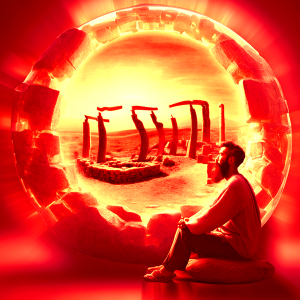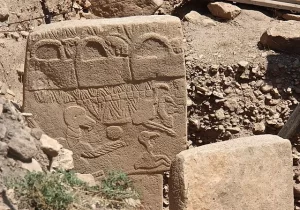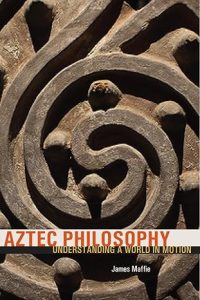 By KEN KORCZAK
By KEN KORCZAK
I use an experimental approach involving a combination of remote viewing, lucid dreaming and psychic channeling to gain insights into the ancient Göbekli Tepe monuments of southern Turkey
INTRODUCTION
In May, I published a story here on my Flying Saucer Journalist site exploring a form of channeling that involved contact with a “free-form, non-entity energy stream” of information that exists “somewhere out there” in the Universe.
I cited as an example a session conducted at The Monroe Institute, the well-known and highly regarded consciousness research facility located in Faber, Virginia.
That session was conducted by an individual identified as “Explorer HBW.” He was positioned in one of the Monroe Institute’s controlled-environment booths in which he was being fed binaural beats via headphones to help him achieve a deep state of altered consciousness.
From this altered state, Explorer HBW was able to connect with a source of information that is a cache of information that is just sort of “live streaming” at all times. This “live stream” is not associated with any particular “entity,” “personality” or “being.”
Anyone can tap into this live stream of information to gather valuable information about any manner of subject.
As a lifetime (rather amateurish) dabbler in the channeling arts (beginning with a Ouija board when I was eight), I was intrigued to try my luck at contacting a non-entity free-flowing energy stream. See the free first chapter of my book here: Secrets of the Lost Ouija Board Files.
It is important to emphasize that most if not all channeling of nonphysical entities involved communicating with a specific personality, such as when Jane Roberts channeled Seth or when Darryl Anka channels Bashar.
In the case of tapping into a free-form energy stream, there is no personality — just a source of information. This is explained in detail in my story Livestreaming the Universe. You don’t need to read that to continue here, but it may help you gain some perspective.
The subject matter I choose to seek information about is Göbekli Tepe, the sensational archaeological site in Turkey. The Göbekli Tepe monuments set the science of archaeology on its head when these structures were dated to be approximately 11,000 years old.
Needless to say, numerous intense mysteries surround the meaning, origin and all other aspects of the Göbekli Tepe monuments. Thus, I decided to tap into a free-form energy stream to see what I could find out.
You might say I am attempting what I’ll call “psychic archaeology,” a spin on what the great writer and shaman Robert Moss calls “Dream Archaeology.” I also deployed aspects of remote viewing, lucid dreaming and Jungian active imagination to gather this data.
One last note: Since it is critical that the information source I am communicating with not be assigned a name, even for convenience, I identify it only as “Energy Stream” in the following transcript.
SEEKING NOVEL INSIGHTS INTO PILLAR 43
Opening statement:
KEN:
Let’s start with something simple and direct. I would like to know the meaning of the depictions carved onto what our archaeologists have designated as “Pillar 43” located at Göbekli Tepe, also called the “Vulture Stone.”
Some of our scholars have suggested that the Vulture Stone was meant to transmit the story of how a comet or series of comets struck the earth sometime between 12,900 B.C.E and 11,700 B.C.E. — and this was to serve as a warning to future generations.

Is this correct?
ENERGY STREAM:
It is cautioned that terms such as “correct” or “incorrect” can be problematic because many legitimate possibilities exist and all of them can be determined to be valid and “real” in your terms. 444-(i)
(Reader’s Note: The cryptic number 444-(i) that cropped up and tagged the end of my communication was mysterious to me at first, and my first through was to exclude it. I thought it was just “extra noise.” However, as you read on, you will see it is something quite different and unusual.)
KEN:
Umm…okay. Well, then, does this image of a vulture extending its wing and appearing to balance or levitate an orb above its feathered appendage symbolically represent the comet in question?
Some of our scholars and scientists have suggested that the vulture represents the constellation of Sagittarius and that this is the position in the sky where the comet would have been observed by people on the surface of the earth. They note that Pillar 43 also bears the image of a scorpion. As we know, the constellation Scorpio is positioned next to Sagittarius in the night sky. So, this adds some weight to the hypothesis.
ENERGY STREAM:
This notion can be said to be a valid probability because it has become a popular conception brought forth by conscious thought in what you perceive as your present time. If the notion gains sufficient popularity within your culture, this framework will then be transmitted to the past to become a legitimate reality in terms of the meaning of the image on the stone. 444-(i)
KEN:
Jeepers! Okay. What you are suggesting is that we are shaping the meaning of our past from our vantage point in our present. In other words, just as we can plan for the future and possibly shape future outcomes, the same effect is happening in reverse, so to speak. We shape the past just as we shape the future, even though we may do that imperfectly. Am I getting that right?
ENERGY STREAM:
This is radically oversimplified but essentially correct. 444-(i)
KEN:
But what if no one in my present time conceived the idea of the comet catastrophe? Or better yet, what was the meaning of the Vulture Stone depiction before our archaeologists began to excavate these artifacts in 1995?
ENERGY STREAM:
Many probabilities remain in terms of its meaning. 444-(i)
KEN:
Okay, how about this? Can you look across the spectrum of probabilities and select the strongest, most influential and the most likely probability for the meaning of the Vulture Stone image?
ENERGY STREAM:
In a sense, yes. 444-(i)
KEN:
Okay, but before we do that, could you please explain the meaning of the 444-(i) which signals the end of each of your communications?
ENERGY STREAM:
The cipher does not originate with this body of information. 444-(i)
KEN:
But there it is again! It flashes almost as if it’s a bright neon light of numbers in my perception at the end of each of your statements! You’re not doing that?
ENERGY STREAM:
It is suggested that 444-(i) is a third party signaling to you. It is suggested that it wishes to insert itself into our communication and is eager to speak with you directly.
KEN: GAK!
Note: As strange as this may seem, the 444-(i) situation is not an unfamiliar phenomenon for me. In my 50 years of Ouija communication experience and then later with other forms of automatic writing and channeling, an unrelated “third party” occasionally tries to force its way into a conversation or get my attention in some way.
Thus, I paused my communication with the Energy Stream to make a connection with 444-(i), hoping to “clear the channel,” so to speak.
I won’t go into detail about who or what 444-(i) is, except to say that it identified itself as an “Imaginary Angel Collective” and desired to speak with me.
The (i) tagged at the end of 444 stands for “imaginary,” the Angel Collective said. It is interesting to note that (i) is used to denote imaginary numbers in mathematics.
However, because I was eager to stay focused on my Göbekli Tepe project, I thanked 444-(i) for seeking a connection but advised “them” I would be unable to converse with “them” at this time.
I offered them “kind energy” and sent them on their way.
It worked. The bright flashing 444-(i) ceased at the end of the Energy Stream responses thereafter.
KEN:
I apologize for the interruption. Please select a meaning of your choice of the highest probability meaning for the Vulture Stone art and describe it to me.
ENERGY STREAM:
There is a powerful resonance with the conception that the orb, as you call it, represents the essential consciousness of an individual being.
A popular and somewhat delusional term in your culture is “soul.” So, if you please, SubKen, use the arbitrary term “Soul Orb” but do not attach to it.
The Soul Orb is being assisted by the Vulture back into the nonphysical realm from which it originated.
It was the Vulture that stripped the flesh from the physical matter entity after it ceased functioning. The Vulture consumed the flesh and transformed its essence from physical to spiritual.
This stripping of the flesh is required to free the essential consciousness of the being from its physical bonds.
The Vulture then becomes pair-bonded to the being whose flesh is consumed. It becomes an Afterlife Guide for the Soul Orb that has been released from physical bondage.
(Note: At this point, the Energy Stream began to address me as “SubKen” for some bizarre reason. I decided not to pursue the meaning for this because, again, it would mean an unwelcome digression.)
KEN:
Thank you. This sounds plausible. Let me now ask this: There is another ancient site in southern Turkey about 700 kilometers to the west of Gobekli Tepe known as Çatalhöyük. It has been dated to be roughly 2000 years later than the Göbekli Tepe site — yet some of its symbolic depictions closely match — especially the Vulture motif.
For example, the Çatalhöyük structures bear an image of a vulture juxtaposed with a headless man or person. Pillar 42 also bears the image of a headless man. Does this mean that the Gobekli Tepe culture influenced that of Çatalhöyük?
ENERGY STREAM:
It would be more accurate to say that the imagery of Çatalhöyük was transmitted into the past to Göbekli Tepe, but it is cautioned that adopting a linear view of time in which ideas flow back and forth bi-directionally is a radically inaccurate way to model reality.
All events exist in a dynamic now, in the present. Thus, it should not be surprising to anyone that an individual positioned in the year 11,500 B.C.E. (in your common terms) can access information from (his future) of 7000 B.C.E.
Individuals in both eras have access to the same information and specific bodies of information are routinely shared within any so-called century or millennium.
KEN:
Thank you! This really explains a lot. My notion is that if our scientists today would adopt this conception of time, it would immediately solve a lot of vexing problems.
For example, all this makes me think of Cozacauauhtli, the mythological vulture described by the Aztec civilization. Cozacauauhtli also eats the flesh of the dead and transforms it into spiritual matter, so to speak.
Consider this information quoted from page 207 of James Maffei’s excellent book, Aztec Philosophy: Understanding a World in Motion:
“Xololt and Tlalachitonatiuh thus have mortuary aspects, both being associated with the levels under the earth. This mortuary aspect is further highlighted by the reigning bird of the trecena, the vulture Cozacauauhtli. Vultures eat dead flesh or carrion, transforming death into life…
… By combining attributes of Tlaloc, Quetzalcoatl and Tlaltecuhtli (“Lord of the Earth”), the depiction of Tlalachitonatiuh suggests the transformative relationship between the process of decay, death, germination, fertility, renewal and rebirth. The emphasis, once again, is upon cyclical completion and renewal.”
Now consider the classical era of the Aztec civilization flourished from 1300 to 1521 A.D.! That means a fast forward from Göbekli Tepe of at least 10,000 years and roughly 8,000 years distant from Çatalhöyük!
Furthermore, the Aztec civilization is a culture that emerged across an ocean on another continent, yet many of the same cultural motifs and artifacts of the Aztecs bear a striking confluence with the ancient cultures of Eurasia and others.
At the same time, it is generally assumed that the Aztecs share no history or connection with the cultures of Göbekli Tepe and Çatalhöyük.
Our scholars today struggle for a workable model to explain striking similarities between these widely divergent cultures, such as the remarkable “handbag” motif.
But if scientists adopted and selected a concept of time as a “dynamic now,” many vexing mysteries would be quickly weeded out and they could proceed in a way that is not counterproductive to their efforts to understand the ancient world.
MANY QUESTIONS REMAIN
The transcript of my discussion with the free-form Energy Stream I have presented here today was designed to ease my readers into a further and much wider-ranging series of questions I posed about the mysteries of Gobekli Tepe — and the many mind-blowing answers I received.
I’ll warn you: The information I will roll out in future articles will seem extremely bizarre and difficult to accept.
While some may find this first installment difficult to accept or understand, many others may already be familiar with the concepts of “simultaneous time” and the reality of a “dynamic present” which is the “action point” for everything that happens in the past and the future — not symbolically but literally.
In future installments, I’ll provide the Energy Stream’s views on such topics as:
–> What is the precise meaning of the headless man?
–> What is the overall purpose of Gobekli Tepe? Why was it built?
–> How did the people of Gobekli Tepe manage to move large stone monuments that weighed up to 50 tons? How did supposedly primitive Neolithic hunter-gatherers develop the technology to quarry and move massive stones?
–> Who were the people of Gobekli Tepe? What did they call themselves?
–> Why were the monuments purposefully buried after years of productive use?
KEY TAKEAWAYS FROM THIS ARTICLE:
–> The purpose of Göbekli Tepe cannot be assigned to a single “correct interpretation.” In at least one probability, the “comet catastrophe” theory can be said to be true if enough people in our present time accept this idea and project it into the past to make it a reality.
–> On the other hand, many other probable realities are also valid. For example, the Energy Stream suggested the Vulture immolation of the flesh scenario is among the strongest of probabilities when considering the spectrum of all probabilities. However, that does not make it “correct” in that it cancels out others.
–> For example, many people suggest an “ancient astronaut” scenario to explain Göbekli Tepe while others invoke theories based on the Atlantis civilization or Lemuria as influences. These are legitimate probabilities and are “in play,” so to speak. There are probabilities wherein Göbekli Tepe was built by refugees from the destroyed civilization of Atlantis, and this is a legitimate probability that must be said to exist in reality.
–> This also means that “primitive, sweaty, barely-more-than-cavemen guys with ropes and stone chisels” is a legitimate scenario for how Göbekli Tepe was constructed.
–> It is vital to adopt a model of “simultaneous time” wherein what is happening right now in the “dynamic present” is the focal point of action that makes Göbekli Tepe what it is.
–> Those of us who think about Göbekli Tepe and various scientists who study it firsthand must be considered “co-creators” of what makes Göbekli Tepe what it is.
NOTE: For more of my exoconscious explorations of Göbekli Tepe, please see: KEN-ON-MEDIUM
